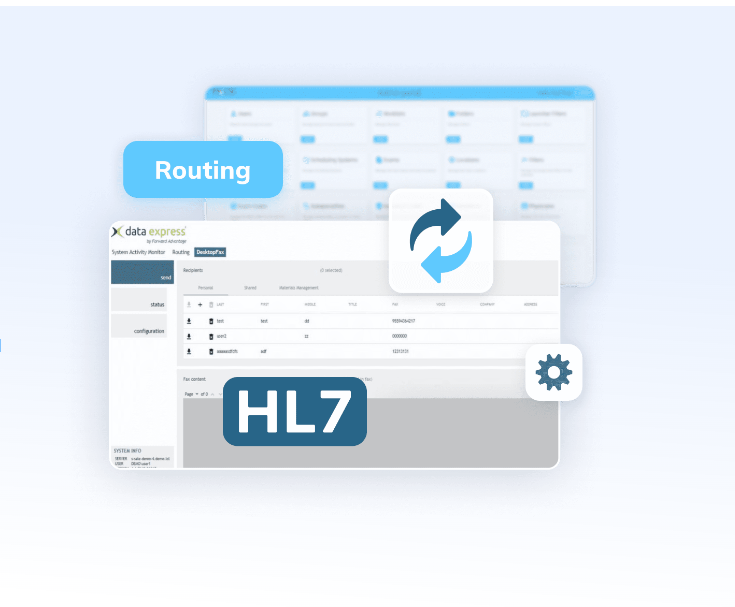Introduction
In today's rapidly evolving healthcare landscape, the seamless exchange of patient data is paramount. Health Level 7 (HL7) standards have emerged as the backbone of interoperability, facilitating the smooth transmission of electronic health information between different healthcare systems. Understanding HL7 healthcare is crucial for healthcare professionals, IT specialists, and policymakers alike. Let's delve into the world of HL7 healthcare standards and explore their significance in enhancing patient care.
Exploring HL7 Healthcare Standards
HL7 Healthcare Standards: A Primer HL7 healthcare standards refer to a set of international specifications for the exchange, integration, sharing, and retrieval of electronic health information. These standards are developed by the Health Level Seven International organization, a global authority in healthcare interoperability.
Key Components of HL7 Healthcare Standards HL7 standards encompass various components, including messaging standards, clinical document architecture (CDA), Fast Healthcare Interoperability Resources (FHIR), and more. These components define how healthcare information is structured, transmitted, and utilized across different systems.
Benefits of HL7 Healthcare Standards Embracing HL7 standards offers numerous benefits, such as improved data accuracy, enhanced patient safety, streamlined workflows, and reduced healthcare costs. By standardizing data exchange protocols, HL7 promotes interoperability, enabling healthcare organizations to deliver efficient and coordinated care.
Implementing HL7 in Healthcare Systems
Integrating HL7 into Electronic Health Records (EHR) Systems One of the primary applications of HL7 standards is in electronic health records (EHR) systems. HL7 messages facilitate the exchange of patient demographics, laboratory results, diagnostic reports, and other clinical data between disparate EHR platforms.
HL7 Interfaces in Healthcare Integration HL7 interfaces serve as connectors between different healthcare applications, enabling seamless data exchange and interoperability. These interfaces play a vital role in integrating disparate systems, such as laboratory information systems (LIS), picture archiving and communication systems (PACS), and more.
Advancements in HL7 Healthcare Standards
The Evolution of HL7: From Version 2 to FHIR Over the years, HL7 standards have evolved to keep pace with technological advancements and changing healthcare needs. While HL7 version 2 (V2) remains widely used, the emergence of Fast Healthcare Interoperability Resources (FHIR) represents a paradigm shift towards more modern, RESTful API-based standards.
FHIR: Revolutionizing Healthcare Interoperability FHIR represents a leap forward in healthcare interoperability, offering a flexible, standards-based approach to data exchange. With its focus on simplicity, scalability, and web compatibility, FHIR is poised to drive innovation and accelerate the adoption of interoperable healthcare solutions.
Overcoming Challenges and Driving Adoption
Challenges in HL7 Implementation Despite its benefits, implementing HL7 standards can pose challenges, including interoperability issues, data mapping complexities, and resource constraints. Addressing these challenges requires collaboration among stakeholders and a concerted effort to standardize processes.
Driving Adoption and Interoperability Initiatives To promote widespread adoption of HL7 standards, healthcare organizations must invest in training, infrastructure, and interoperability initiatives. Government mandates, industry partnerships, and interoperability frameworks play a crucial role in driving adoption and fostering collaboration.
FAQs (Frequently Asked Questions)
- What is HL7 healthcare? HL7 healthcare refers to a set of international standards for the exchange of electronic health information.
- Why are HL7 standards important? HL7 standards promote interoperability, data exchange, and seamless integration between different healthcare systems, improving patient care and efficiency.
- How do HL7 interfaces work? HL7 interfaces facilitate the exchange of healthcare data by translating information between different systems and applications.
- What is FHIR, and how does it differ from HL7 V2? FHIR (Fast Healthcare Interoperability Resources) is a modern, RESTful API-based standard developed by HL7, offering enhanced flexibility and scalability compared to HL7 version 2.
- What are the benefits of implementing HL7 standards? Implementing HL7 standards leads to improved data accuracy, enhanced patient safety, streamlined workflows, and reduced healthcare costs.
- How can healthcare organizations overcome challenges in HL7 implementation? Healthcare organizations can overcome challenges in HL7 implementation through training, collaboration, and investment in interoperability initiatives.
Conclusion
In conclusion, HL7 healthcare standards play a pivotal role in facilitating the seamless exchange of electronic health information, driving interoperability, and enhancing patient care. By embracing HL7 standards and leveraging modern interoperability frameworks like FHIR, healthcare organizations can unlock new opportunities for innovation and collaboration in the digital age.
